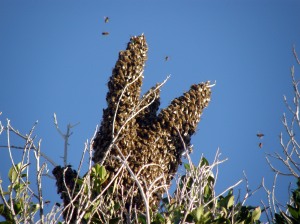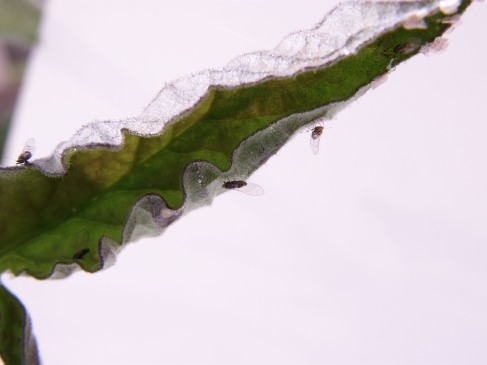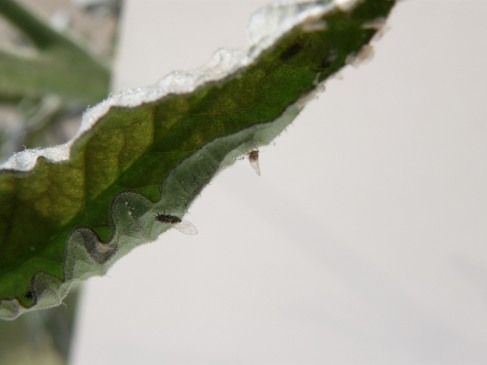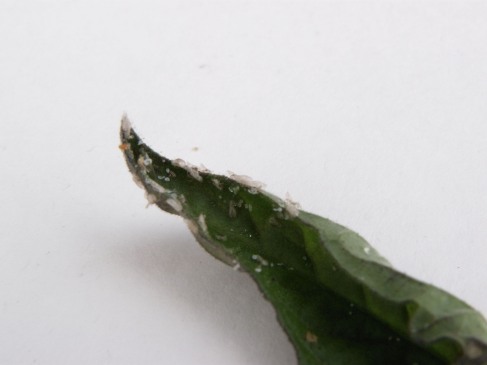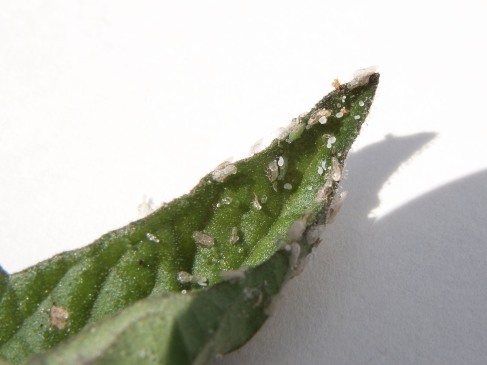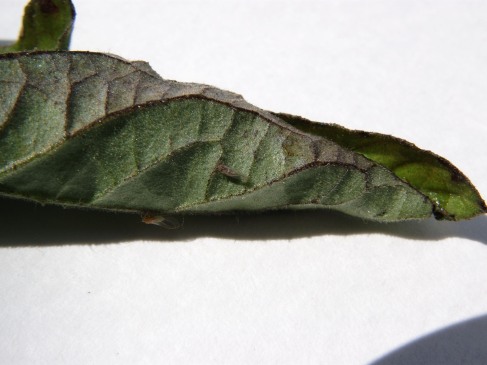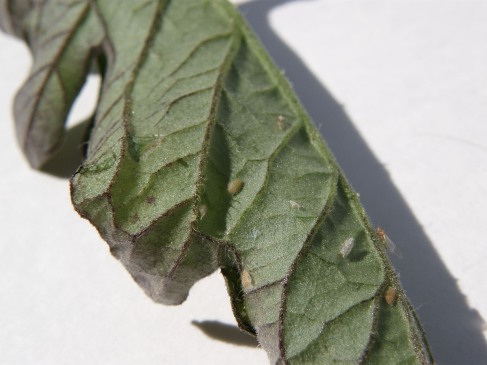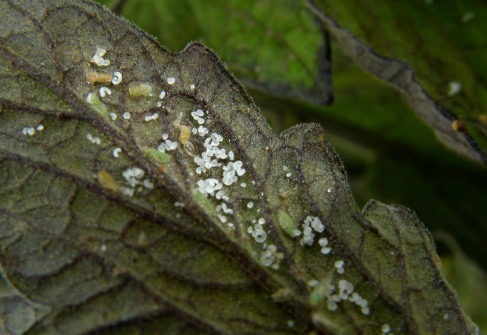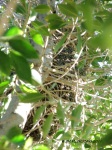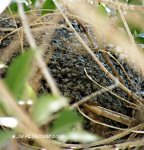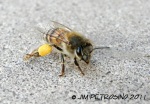Just a quick update…2 days ago, at approximately 4:30pm that huge cluster of bees up and left. I don’t know what happens to bees without a queen…or where they go…but they went. They were there at 4pm, and gone at 5. Odd.
How Heavy is a Bee Swarm?
If you saw my post on the Bee Swarm that happened after the hive removal, then you know they all gathered on a few small branches at the top of the tree, as shown in this picture, taken last night.
.
The branches now look like this second picture, indicating the bees are either heavy enough to bend the branches, or break them.
I was going to use WolframAlpha to do a quick calculation – but apparently Wolfram does not know what a whole honey bee weighs. It does know that wing weight | 0.0024 oz (ounces). Unfortunately that doesn’t help me right now. Either way – a bunch of bees is pretty heavy. I’ll see if I can get a more accurate answer. Feel free to leave your ideas/guesses/formulas or answers as a comment!
Sad Day: Feral Beehive Removed
 It is a sad day here, if you ask me. If you recall my post on a beehive in our yard – you know that there was a giant hive in our tree. In fact, the pest control guy that came to remove it said it was the largest hive in a tree he has ever seen! When he was done spraying it with insecticide and soapy water using a hose-end attachment, he knocked it down with a hammer.
It is a sad day here, if you ask me. If you recall my post on a beehive in our yard – you know that there was a giant hive in our tree. In fact, the pest control guy that came to remove it said it was the largest hive in a tree he has ever seen! When he was done spraying it with insecticide and soapy water using a hose-end attachment, he knocked it down with a hammer.
I’m not sure exactly what he had to do to gain access to it other than climb a ladder and stand on branches. I was taking photos of the area from behind our living room window. It seemed safer that way, for sure!
Safety is why we decided to have it removed. I’m not sure what the liabilities of having a giant hive in your yard are, exactly…but I do know that school buses stop within 50 yards of the tree – and having a large hive with wild bees didn’t seem to be the smartest thing – so we reluctantly had it removed.
Now, the hive is gone. Actually I think its gone – I haven’t ventured to the tree to peek yet! I watched the guy bag up a huge amount of comb, and there are dead/dying bees strewn all over the yard now…but there is also a huge swarm of bees clustered on a branch at the top of the tree – probably scared and unsure of what to do without their queen.
The “bug guy” tells me that the swarm will die off or move sooner or later. May take a week, he said, due to the size of the hive (which he estimated at the size of a kitchen trash can).
I can definitely say, that there were no unhappy bees in this hive until we decided to mess with Mother Nature. Now, there are a bunch of confused bees with nothing to do except buzz around this branch…and I feel bad about that.
Insecticidal Soap Sprayed
I noticed some insects on the Scotch Bonnet last night – hope they aren’t the same ones as the tomatoes. I think they are aphids…but that’s what I thought about the toms at first too! I covered the plant with Garden Safe Insecticidal Soap today, which we bought at Lowe’s last night. There are quite a few small leaves, as this plant is from last year and it is just now coming into season after I pruned it a couple of weeks back. Some leaves are a bit yellow, so I added some fish emulsion to the watering today.
It is currently 75F with a projected high of 84, so I moved the plant into shade before spraying.
Possible Tomato Psyllid Infestation
UPDATE- 3/22/2012: I have confirmation from an entomologist that these are psyllids. The fruit has become malformed, catfaced and just doesn’t grow “normally”. The tomatoes taste good, but the texture is mealy and unappealing – which confirms my suspicions that the plants are infected with Curly Top Virus and I will be removing/destroying them soon.
Curly Top Virus Signs I have learned to look for :
- Purple veining
- Curling Leaves
- Insects
- Mealy Flesh in Tomatoes
—
Okay, I’m not 100% sure that I have Psyllids, but it is looking that way.
I’ve had some leaf curl on the Black From Tula tomatoes almost all year. That has been combined with purple veining and coloration on the leaves. I was just chalking it up to the fact that these plants survived the winter in their Earthbox and they were probably stressed because of the temperature swings and the fact that there are 3 plants in the Earthbox, rather than the recommended two.
However, as of last night I noticed telltale insect signs like white dots and glistening sticky stuff on the leaves. I uncurled some leaves and sure enough – there are some insects: eggs, larvae, nymphs and adults. I suspected aphids last night. However, after getting up close and personal with assorted two cameras, magnifying glasses, macro lenses and more…it’s not looking like aphids. It’s looking like Tomato Psyllids…which probably isn’t a good thing. Check the gallery of images!
WHOA! Bee Swarm!
I was outside in the back yard, putting a couple of the Bali tomato seedlings into the Earthbox and heard a buzzing sound – which I assumed to be a small plane approaching the nearby airport, which they do frequently. I was wrong. The buzz was approaching loudly and fast and it passed overhead quite quickly – with a noticeable Doppler shift which allowed me to look up and immediately locate a pretty good sized swarm of bees heading west. I don’t know if that means the hive in the front yard has split, or this was another group of bees, but it looked to me like they might be heading to another large tree down the block! Kind of cool.
Heirloom Tomatoes: Bali
Once again I am growing the wonderful Bali Tomato, from Indonesia. It was a good tomato last year, and I got a bit of a jump on the season this year so perhaps I can beat the desert heat. Perhaps not, as it is supposed to hit 80F this week!
These are currently waiting to get a bit larger before they get put into the Earthbox.
Black From Tula
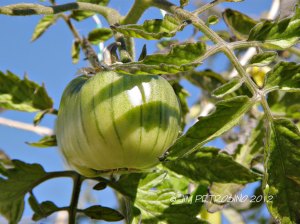 This is year two for the Black From Tula! I took a different approach with this Russian Heirloom this time and started it last fall. I babied it inside through the winter and started bringing it outside around January, which was mild (60 F) here.
This is year two for the Black From Tula! I took a different approach with this Russian Heirloom this time and started it last fall. I babied it inside through the winter and started bringing it outside around January, which was mild (60 F) here.
Now, late February is looking good with about 8 tomatoes like this getting bigger and ripening, with a whole slew of flowers on the two plants in the EarthBox. I am looking forward to an early spring tasting of these wonderful black tomatoes.
Found the Bees
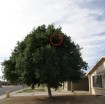
Bees in Ficus Tree
In a previous post, I asked where the bees were. Well, I no longer wonder. They are living in the Ficus tree in my front yard! It’s a big hive, and it’s way up in the tree.
I think they arrived in a swarm last spring. I saw the cloud of bees in the yard, but never saw them land.The tree is very densely leaved, so I failed to notice the hive until this winter as I was raking up leaves.
In Arizona most wild bees are considered Africanized, but these bees don’t seem to pay attention to us or the neighbors. They enter and exit the hive at the top of the tree and fly over the roof of the house during their daily pollen gathering. That is proving to be a good thing, because my latest efforts at growing things is directly behind this tree in my backyard, so pollination is happening nicely with these girls hard at work.
- Wild Bees in Ficus Tree – Hive location shown by Red Circle
Tomatoes Do Not Get Rootbound in an Earthbox
I just decided my tomato season had come to an end and it was time to yank the plants. I just thought I would let everyone know that tomatoes do very well in them, and the roots spread quite nicely horizontally. It is a very efficient way to grow things, if you follow the manufacturer’s recommendations and Do Not Second Guess The System.



